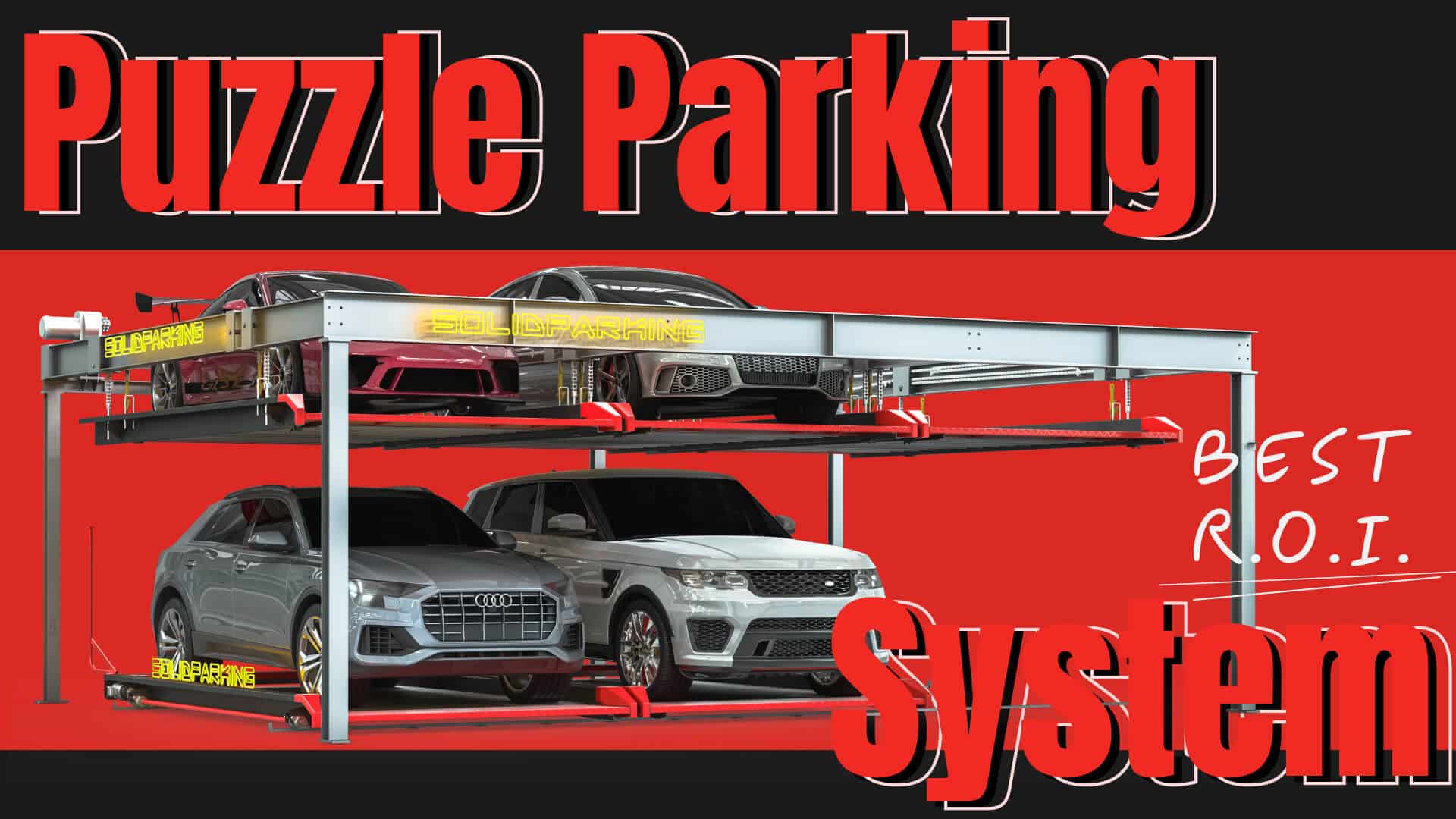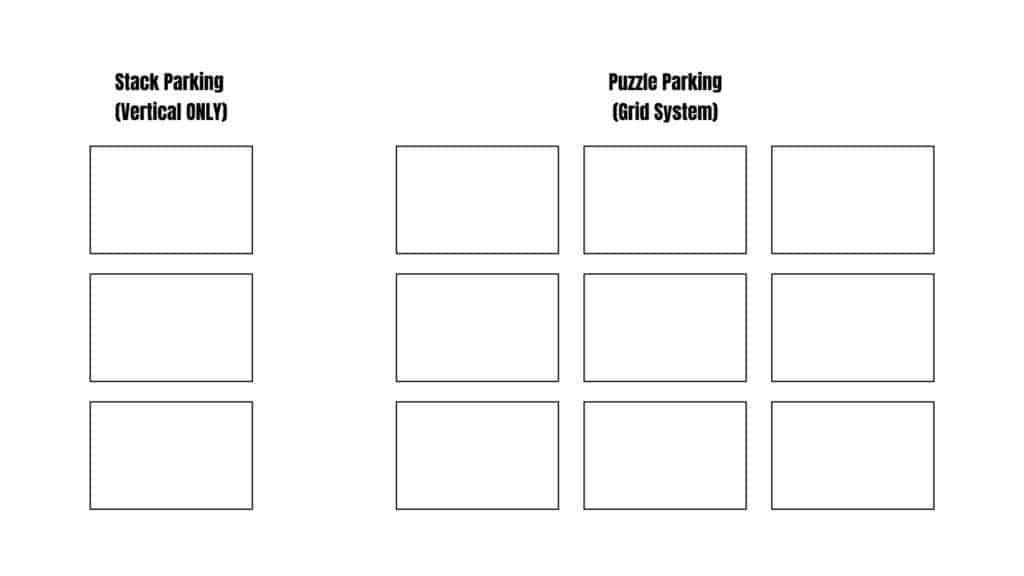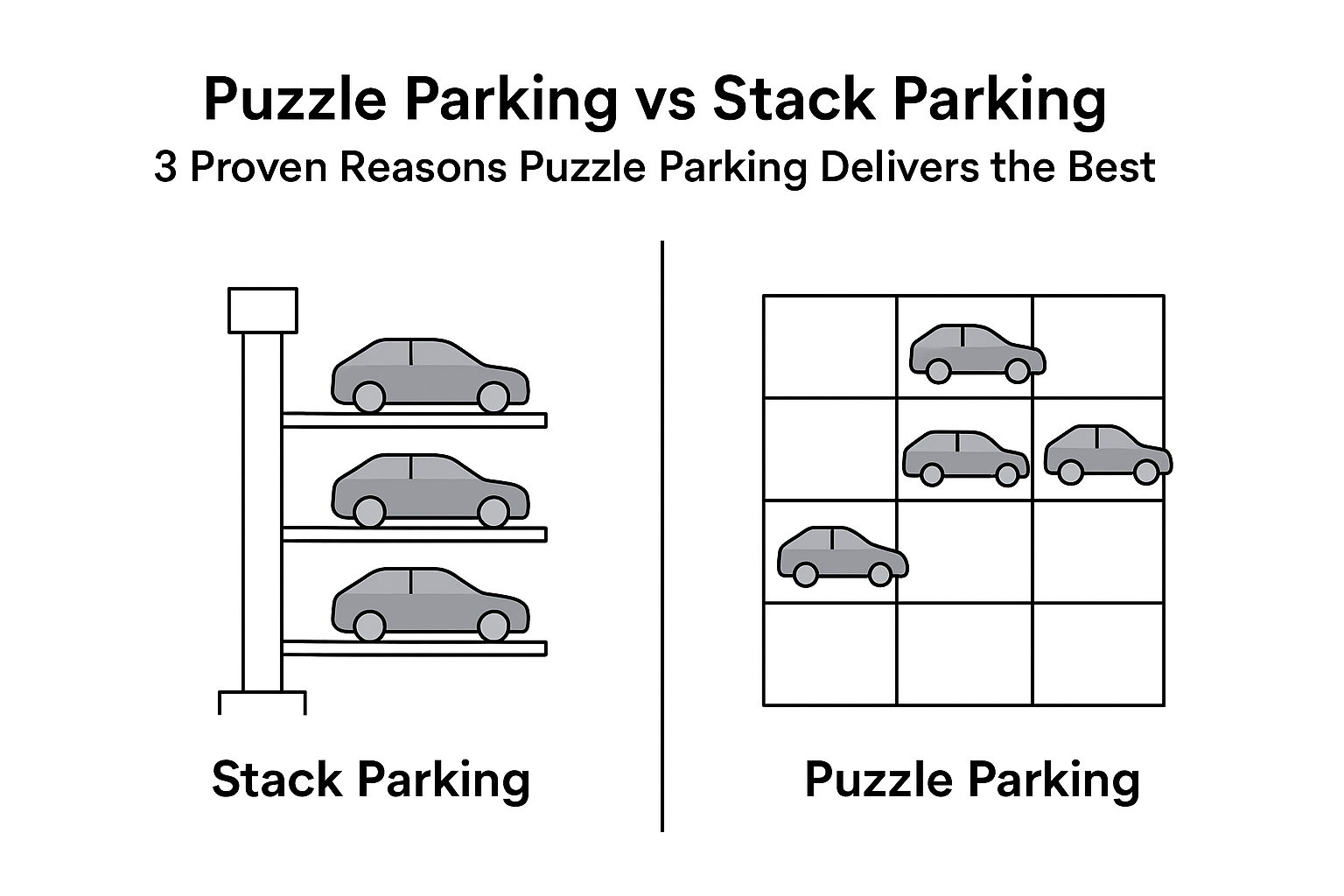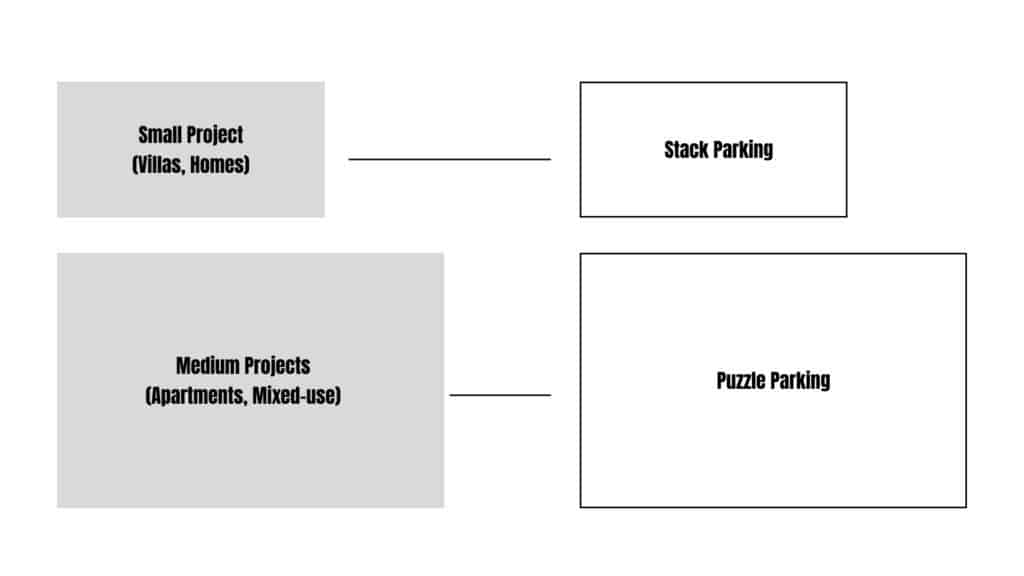
If you’re a developer, architect, or property manager, you know the drill: land is expensive, cars keep multiplying, and traditional garages gobble up precious space with ramps, turning radii, and dead zones.
Mechanical parking systems are the solution — and when it comes to maximizing land use, two systems dominate the conversation: stack parking and puzzle parking.
While stackers get the job done for small projects, automated puzzle-style parking systems are where the real ROI lives. Let’s break down 3 proven reasons developers should consider puzzle parking over stack parking.
Stack parking = cars placed vertically on lifts, usually 2–3 high, sometimes 4 if space allows.
Puzzle parking = platforms that slide vertically and horizontally, shuffling like a sliding puzzle so each car is accessible independently.
Here’s a quick comparison table:
| Feature | Stack Parking | Puzzle Parking |
|---|---|---|
| Capacity | 2–3 cars per unit | 5–50 cars depending on grid |
| Access | Dependent (move one to get another) | Independent retrieval |
| Scalability | Low | Medium (expand grid horizontally and vertically) |
| Best For | Homes, villas, small projects | Apartments, mixed-use, commercial lots |
| Keyword ROI | Low land-use gain | High land-use gain |
Did You Know? A puzzle parking system can deliver 3–5× the capacity of a conventional garage on the same footprint — without ramps.
Simple sketch comparing stacker vs puzzle grid:


The takeaway: if your project is anywhere near a high-density urban or redevelopment site, puzzle parking isn’t just an option — it’s a smart investment.
👉 Related content: See how our four-post lifts serve vehicle maintenance
At first glance, stack parking looks cheaper. But puzzle-based systems deliver superior long-term ROI, especially in dense cities.
Stack parking: Ideal for 2–6 cars, low upfront cost, but scaling requires more land.
Puzzle systems: Higher install cost, but far better space efficiency.
Here’s a cost-to-value table (illustrative only):
| System | Typical Use | Upfront Cost | Land Utilization | Long-Term ROI |
|---|---|---|---|---|
| Stack Parking | Small lots, villas | $ | Low | Limited |
| Puzzle Parking | Mid-size projects | $$ | High | Strong |
Did You Know? Studies show up to 50% savings in construction materials when using puzzle parking instead of conventional garages (Parksmart).
Straightforward install: concrete pad + lift + power. Maintenance is minimal. Downside? Cars often block one another.
Requires careful prep: drainage, fire systems, and precise alignment. Even a 5 mm misalignment can cause issues. But once running, it’s button-click easy.
Did You Know? Modern automated parking solutions use limit switches and anti-fall locks, ensuring cars remain safe even if a motor fails (IPMI on Parking Technology).
· Stack parking: Budget projects, villas, small residential lots.
· Puzzle parking systems: Mid-density apartments, mixed-use, commercial lots — anywhere footprint efficiency is key.
👉 See related: SolidParking’s automated parking systems overview

A: Yes — irregular lots are actually ideal. Puzzle systems can adapt to unconventional footprints.
A: Stack parking failures affect one bay. Puzzle parking has redundancy — cars remain safe even if a motor stops.
A: Quieter than expected. Platforms are insulated and damped, similar to a standard elevator.
A: Minimal training is required. One walkthrough is often enough for a building operator to manage the system.
Puzzle parking vs stack parking: here’s what developers need to know:
· Density wins. Puzzle parking outperforms stackers in land efficiency.
· ROI is long-term. Stack parking looks cheap today; puzzle parking scales with your project.
· Installation is an investment. Properly installed, puzzle parking is smooth, safe, and long-lasting.
Did You Know? Puzzle parking is already standard in Tokyo and Seoul — cities where land costs make every square meter count. Developers elsewhere are quickly catching up.
Next time you’re weighing puzzle parking vs stack parking, ask:
👉 Do I want a short-term fix, or do I want a system that grows with my project?
Chances are, the answer looks a lot like puzzle parking.
